
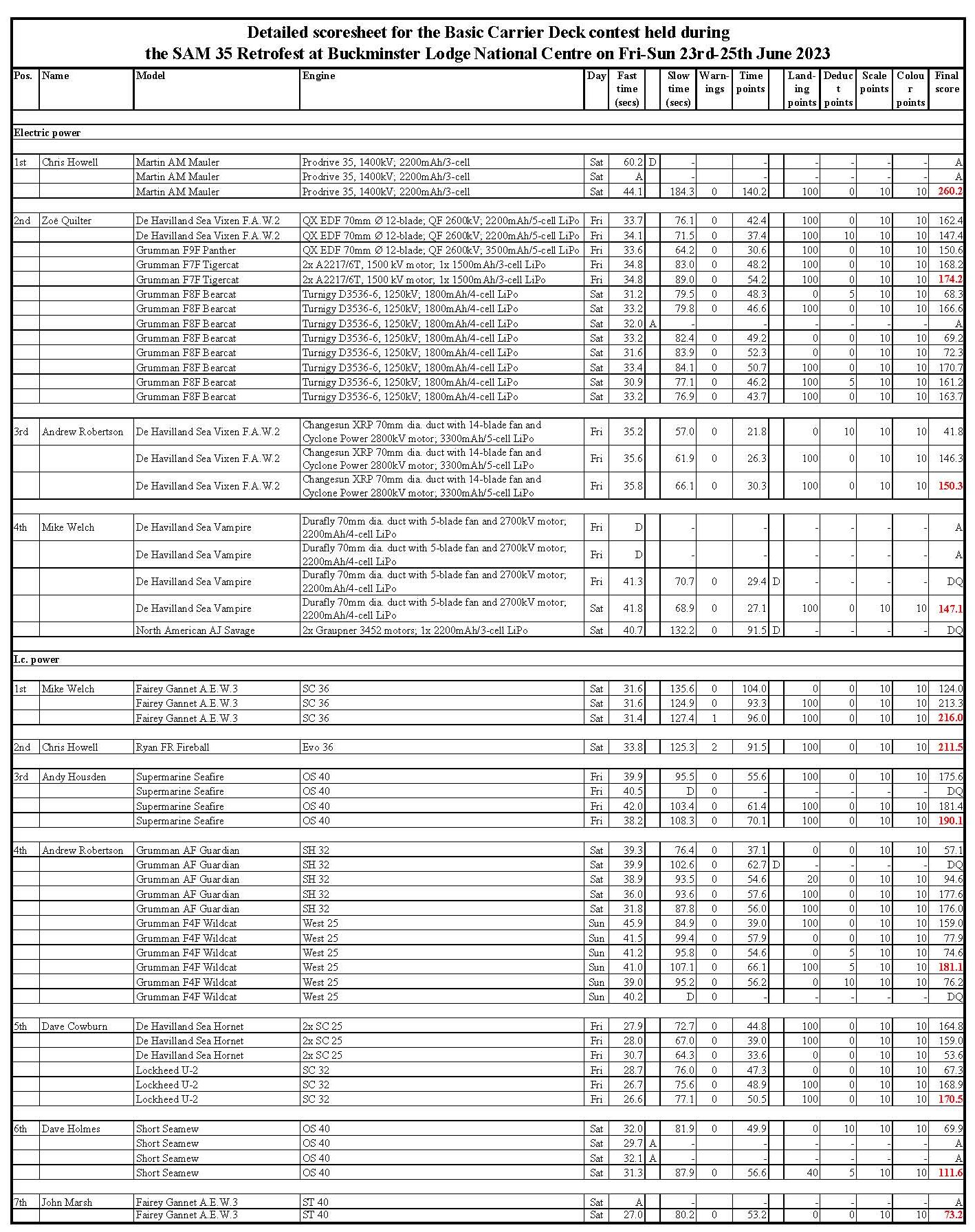
Report and Pix from Andy:
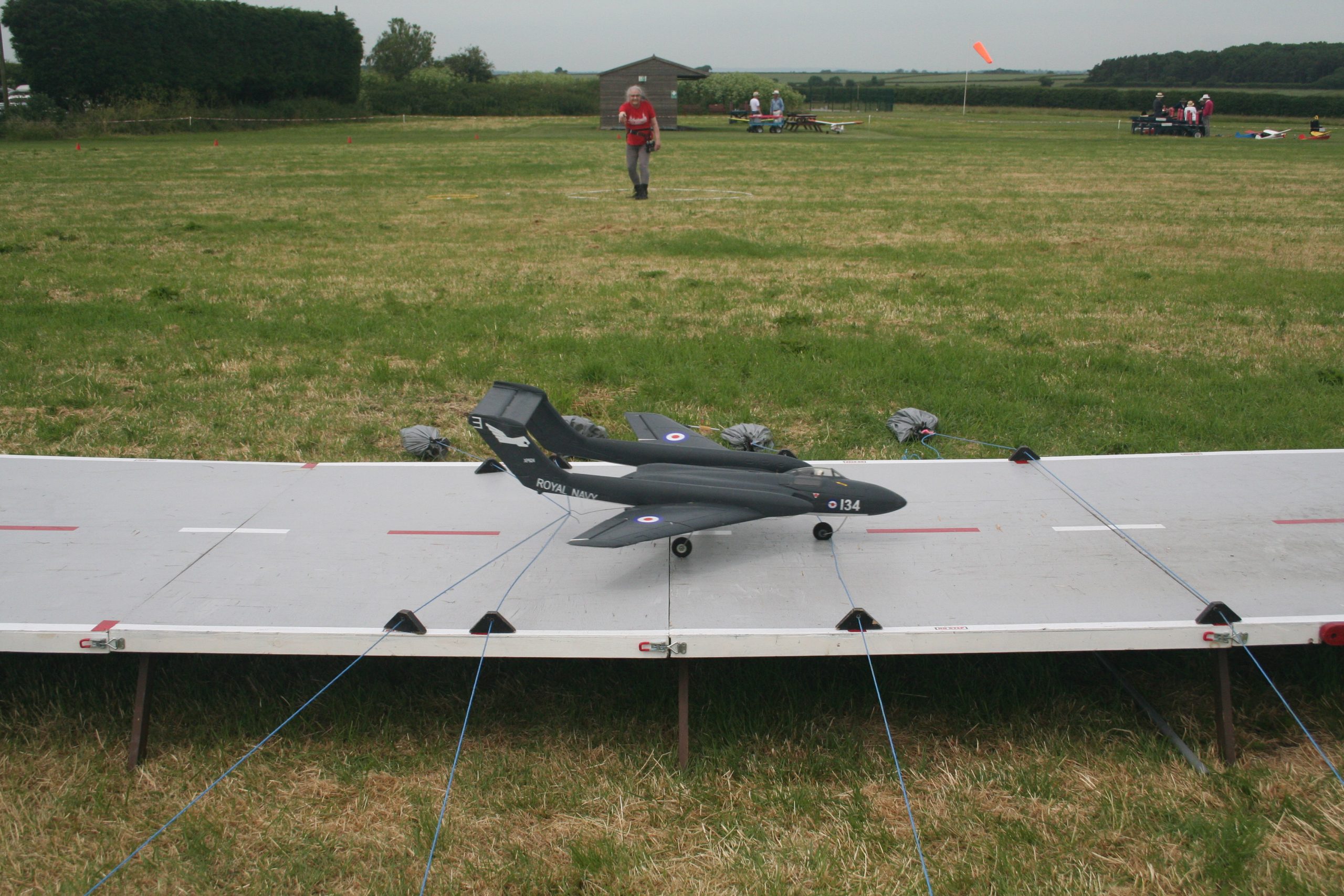
IMG_3480 First flight & hookup of the contest! Zoë Quilter’s DH Sea Vixen FAW2, now initially sorted as far as EDF power train components go, achieves its best scoring flight yet! It is Carrier’s current practice that these RC-electric-foamies-converted-to-CL scale models, primarily eligible for the Class One Postal (C1P) contest that runs continually at each event throughout the season, can also be entered in each event’s Basic Carrier Deck contest. For each flight undertaken, the resultant score provides both a BCD-e result, with a corresponding placing in the contest being flown, plus a C1P result which is entered into an accumulating scoresheet that receives awards both in mid-season (in 2023, during the Old Warden Scale Weekend) and at the season’s end (in 2023, at the SAM 35 Octoberfest at Buckminster).
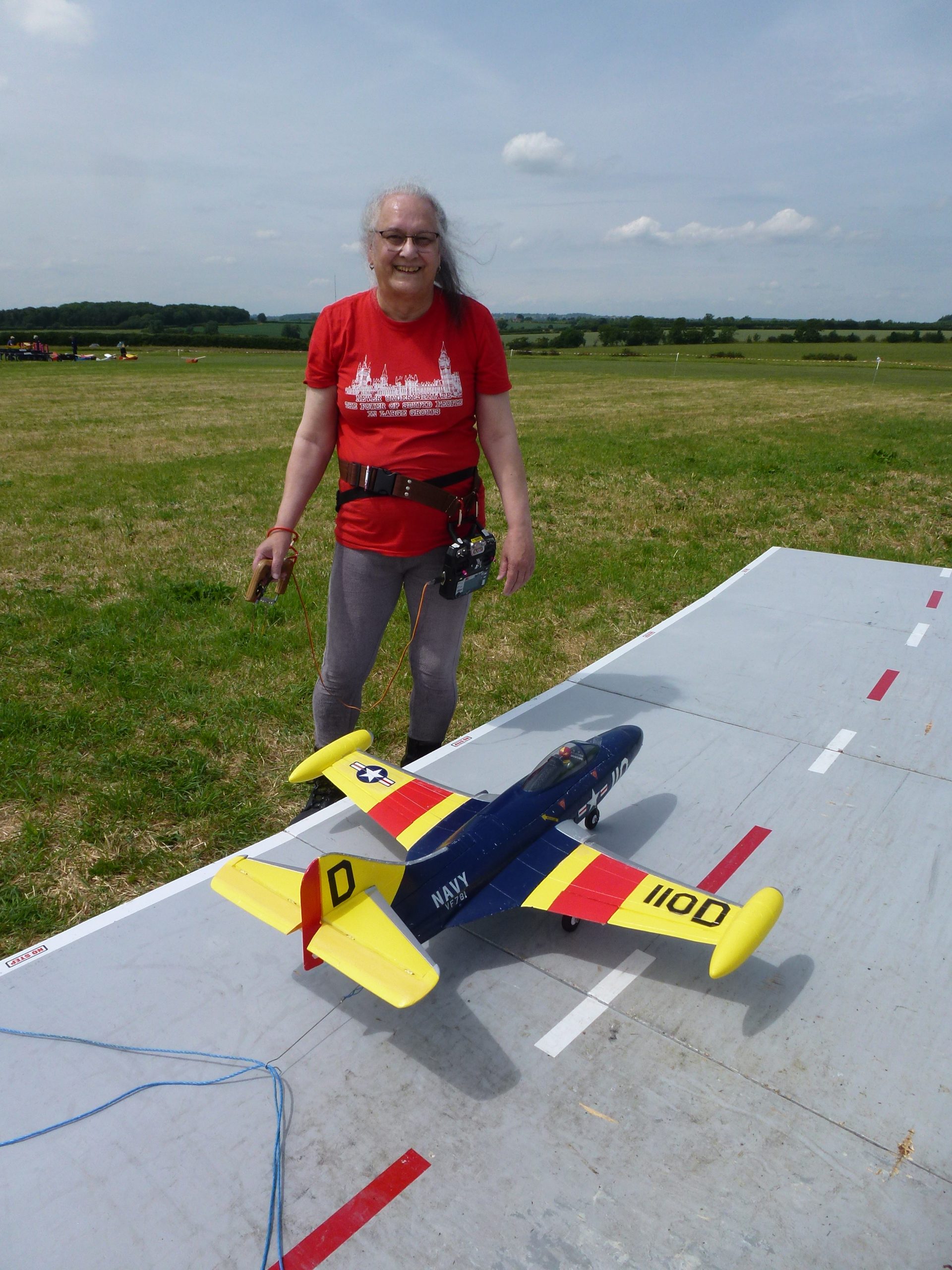
P1110510 Finally! A very happy Zoë Quilter poses with her EDF-powered Grumman F9F Panther at the end of its very first complete flight – right down to its first successful hookup (of the No.2 and No.3 wires on HMS Incontinent). The Panther, whilst sharing essentially the same power train as her Sea Vixen (see the previous photo), is more difficult to fly by virtue of a smaller amount of lifting area – the Sea Vixen being essentially a ‘lifting body’ design – plus the need for a gutsier and therefore heavier battery. The Panther, whilst being flown here in the BCD-e class, is, like her Sea Vixen, also eligible for entry into the Class 1 Postal (C1P) season-long ‘rolling’ contest in which the same flight and landing scores can be combined with the additional bonuses characteristic of this new class to produce a C1P contest score. Though, here, she doesn’t know it yet, this Panther flight has achieved the highest C1P score of the season so far, so unless any other model exceeds this score at the following weekend’s Carrier contest run by Bilston MAC at Walsall’s old Aldridge Airport (and as this is being written after Bilston’s contest, no-one did), she will therefore get the C1P mid-season award of 1st place, to be presented to her during the Old Warden Scale Weekend Carrier contest on 22nd-23rd July!
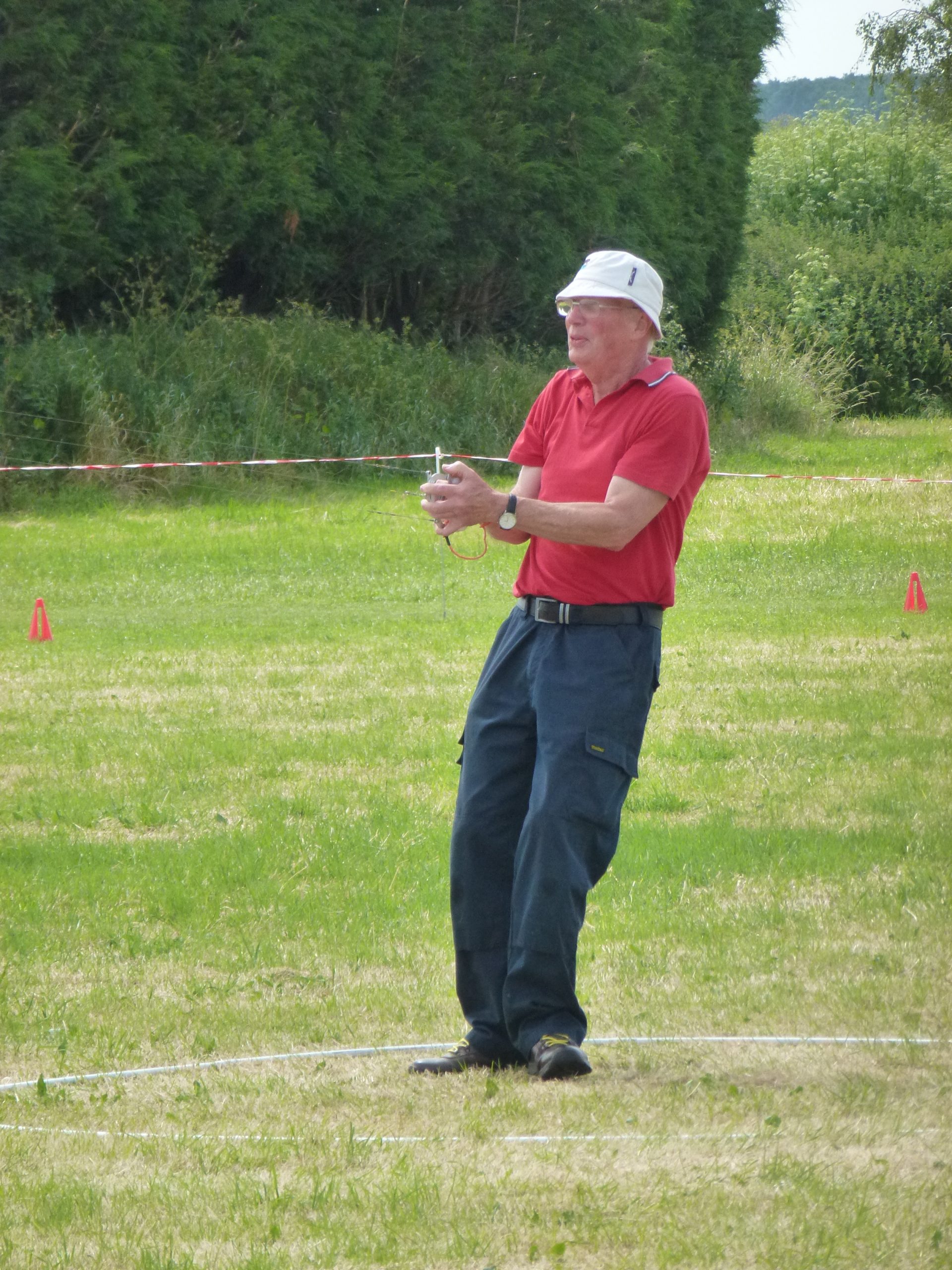
P1110522 Wooooo! Dave Cowburn leans backwards to counteract the very substantial pull of his BCD-i.c. class De Havilland Sea Hornet twin during its fast run. Just like the full-size beast, with both engines on song, the Sea Hornet is very fast and has a sound which is really quite amazing!
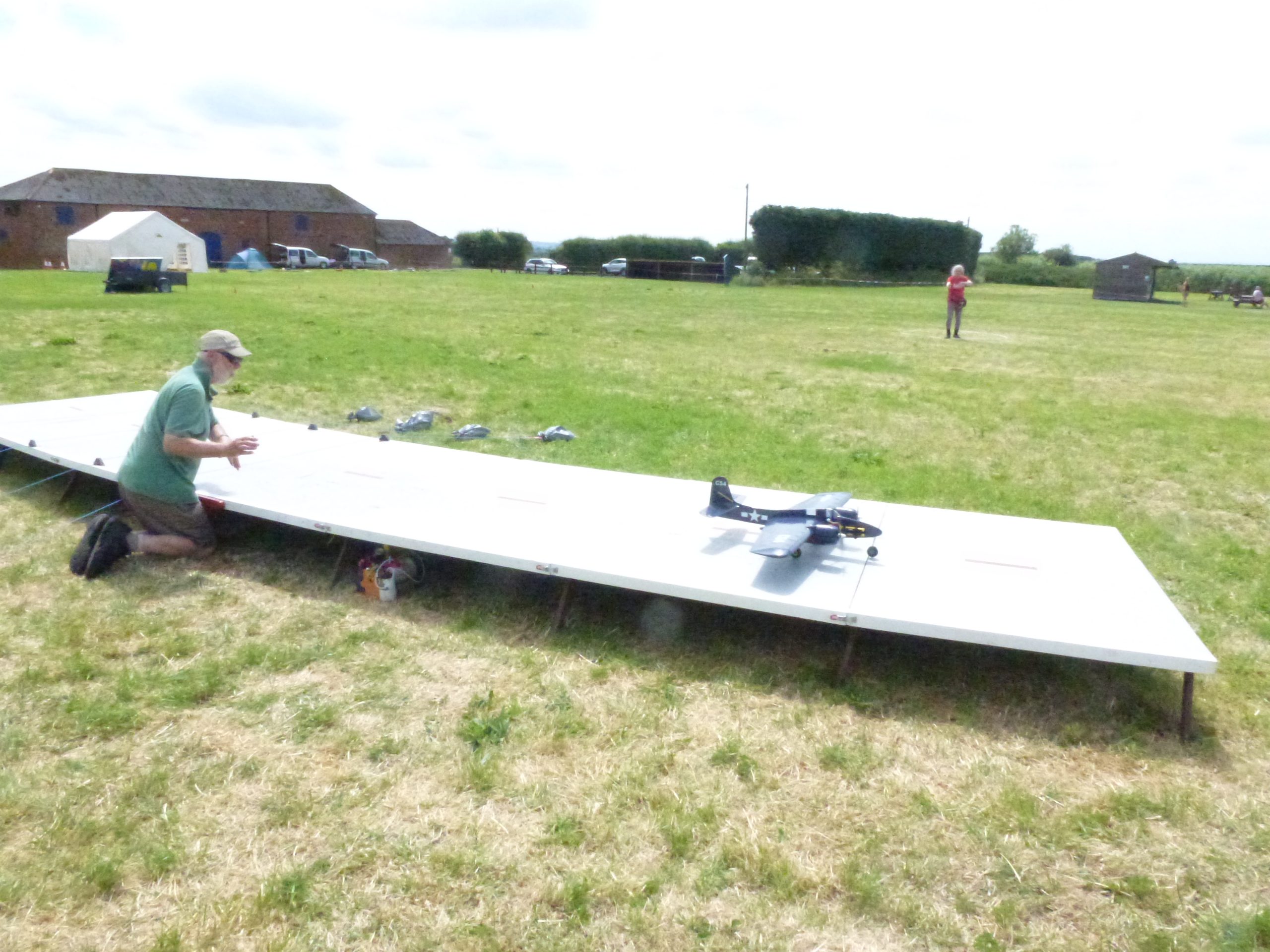
P1110527 Andrew Robertson releases Zoe Quilter’s BCD-e class Grumman F7F Tigercat twin for takeoff from HMS Incontinent. Despite the heavier weight of two engines – though supplied by a single battery – the Tigercat has a larger wing area than Zoë’s Bearcat (shown in a later photograph) and consequently achieves a lower speed during slow flight. This was the second and better of her two Tigercat flights and earned her 2nd place in BCD-e!
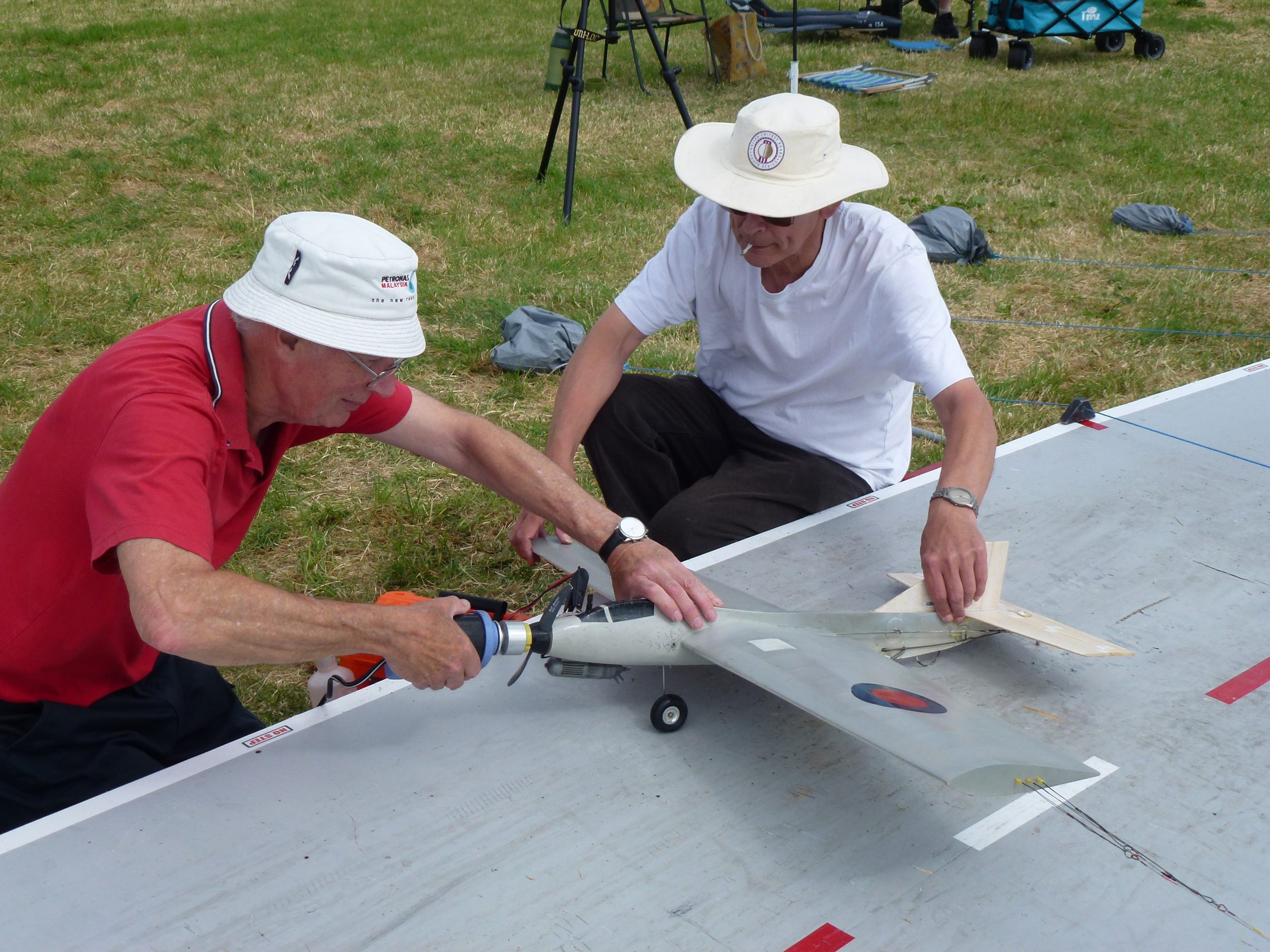
P1110569 Dave Cowburn starts the SC 32 at the pointy end of his BCD-i.c. class Lockheed U-2. It’s been said before, but is always worth repeating: the U-2 DID make arrested landings on board carriers, so models of the type are quite ‘legal’. Although the full-size aircraft was never fully navalised, being a landplane operating from airfields of ‘friendly’ countries for its epic duration photo-reconnaissance overflights of the USSR, a ‘strap-down’ arrester hook pack was developed to also enable occasional operation from United States’ carriers. Presumably such flights from international waters were less politically difficult! The wing span of the U-2 being the whopping thing that it was (originally 80ft with an aspect ratio of over 10, but which grew to 103ft in later variants), the pilots must have been extremely careful when landing to avoid the carrier’s island! Dave’s model has a more conventional wing planform as allowed by BCD’s ‘Scale-like’ appearance rule, though other flyers such as Mike Welch have used high aspect glider wings on similar models in the past. As you might expect, Mike’s own model was more than memorable…!
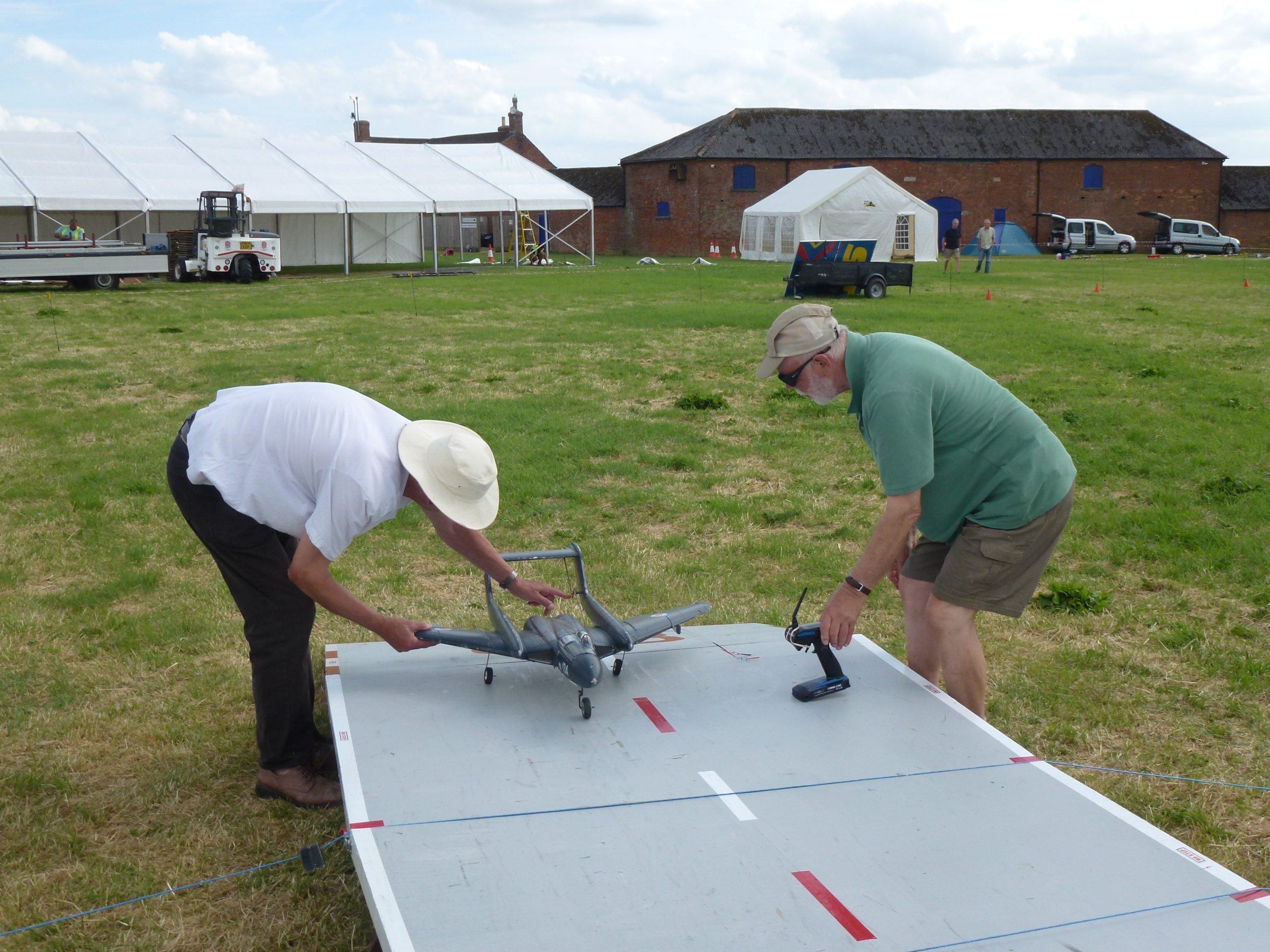
P1110571 Typical EDF flight operations! Andrew Robertson prepares his De Havilland Sea Vixen for a contest flight after the arrester wire support blocks have been removed and the wires laid directly on the deck of HMS Incontinent. This provides the full standard deck length of 28ft for the takeoff run as models run over the wires without any problem (providing the hook is latched up, of course!). Experience has so far shown that if an EDF-equipped model cannot get off within this length, it is unsuitable for Carrier use. Whilst catapulting-assisted takeoffs are currently still in the experimental stage, the method shown here is workable and somewhat gentler on models!

P1110581 Andy Housden’s BCD-i.c. class Supermarine Seafire displays its very long fuselage. Oi! Proper scale length, don’t you know! The wings are detachable and from an old stunter: note the hastily strapped-on wingtip weight and the not-in-flight-adjustable flaps with visibly different settings, all of this being part of ongoing attempts to reduce some unpleasant tip stalling problems…
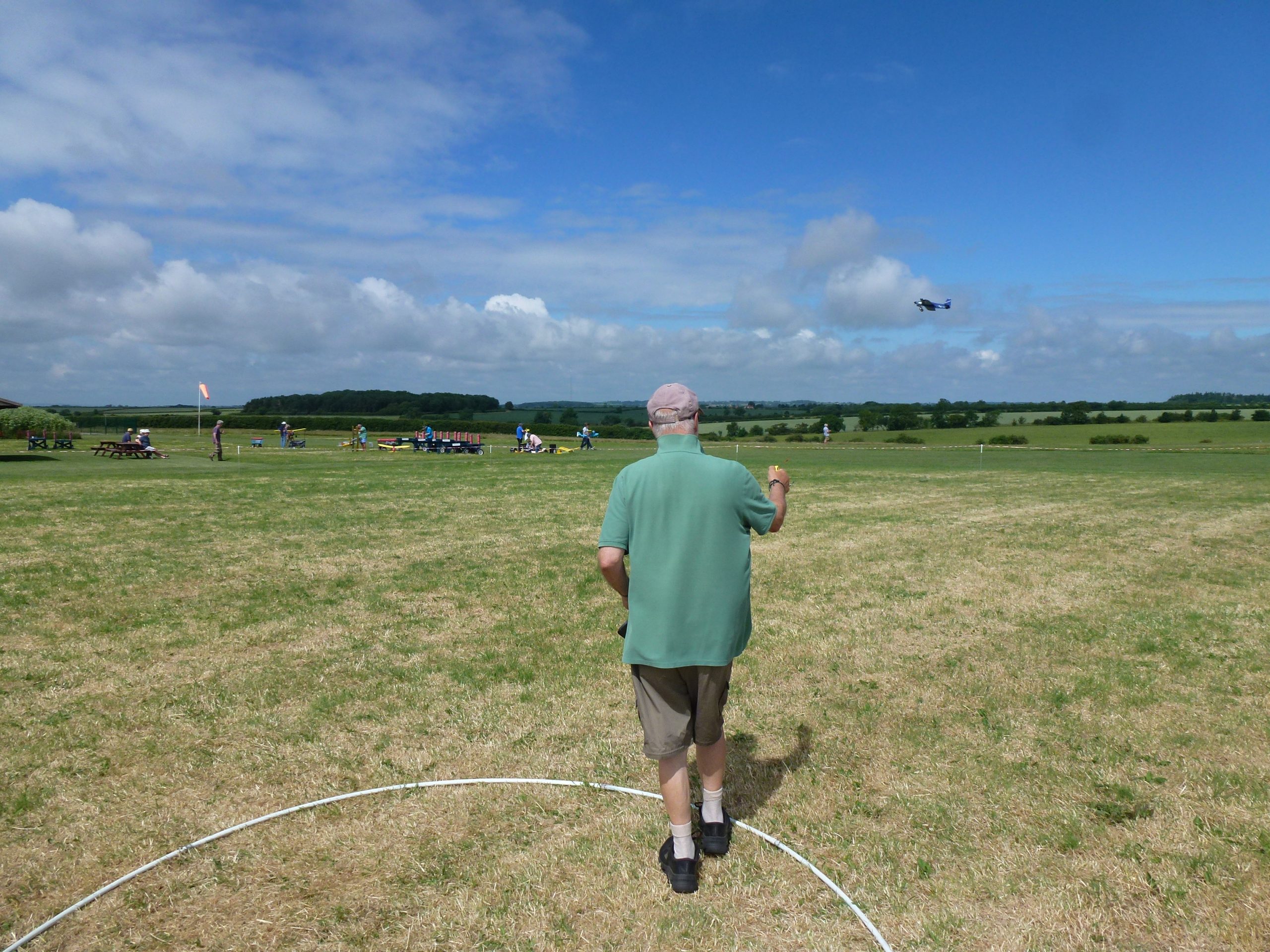
P1110610 Andrew Robertson seen during the slow run with his BCD-i.c. class Grumman AF Guardian early on Saturday. As can be seen, the Buckminster weather over the host SAM 35 event looked spectacularly good – though if anything it was too hot and remained quite windy for all three days. We British will always complain, though, won’t we? Andrew found the wind conditions quite trying and whilst his Guardian has the maximum wing area permissible under the rules, he had better success with his Grumman F4F Wildcat shown in the last photograph here.
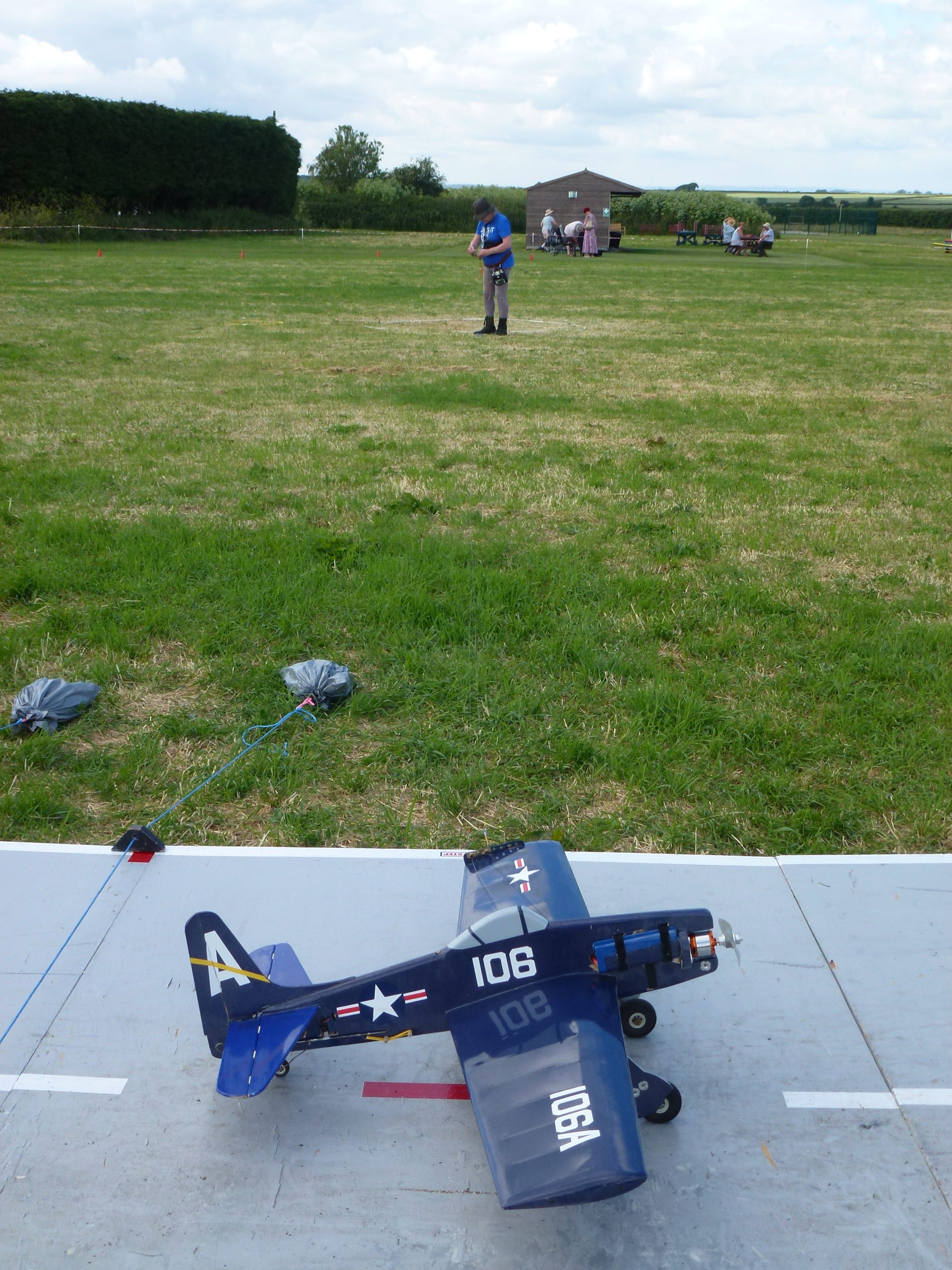
P1110623 Zoë Quilter connects up her lines prior to a flight with her BCD-e class Grumman F8F Bearcat. This model was a Brodak kit, though the piston-engined front end has obviously been modified by Zoë to suit electric power. This 1960s design was originally that of the J.Roberts company (yes, the same company that created the famous mechanical 3-line throttle control system) and it is perhaps fair to say that model appearance was given precedence over robustness, since the rather flimsy wing-rib-mounted undercarriage is very easily torn off. Other modellers have relocated the landing gear onto the fuselage where it is usually happier, but Zoë has retained the original location, albeit with some local extra wing strengthening. The wing itself is nicely proportioned in respect to the fuselage, which means that the area is lower than the 450 sq.in. maximum permitted by the BCD rules, and the slow run performance is correspondingly less. Looks very attractive, though!
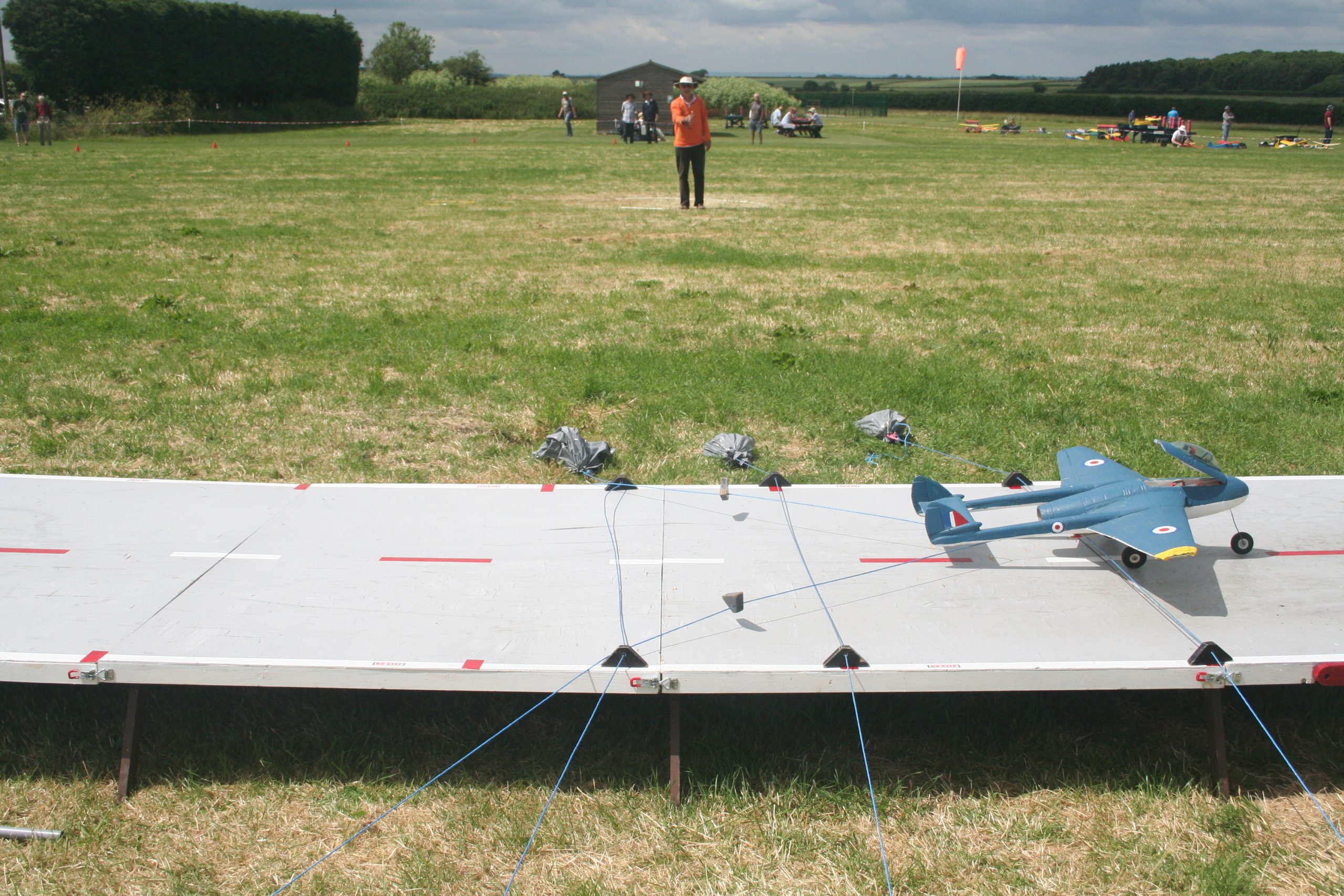
IMG_3521. Mike Welch’s EDF-powered BCD-e class De Havilland Sea Vampire caught at the moment of hookup. Although the trap on HMS Incontinent’s No.1 wire was faultless, the pilot in the model obviously thought otherwise as the canopy can be seen being released prior to ejection! This was the only successfully completed flight of the four attempted by Mike with this model as the three previous flights ran out of battery power at different stages. It is, of course, a perennial problem for any EDF operator to balance battery capacity against battery weight – a lighter battery may mean too little capacity and result in running out of power before the end of a flight; too much capacity means a heavier battery, which may also mean insufficient acceleration to reach flying speed before the deck runs out. It is also possible, however, that Mike might have been using battery packs which had seen distinctly better days…
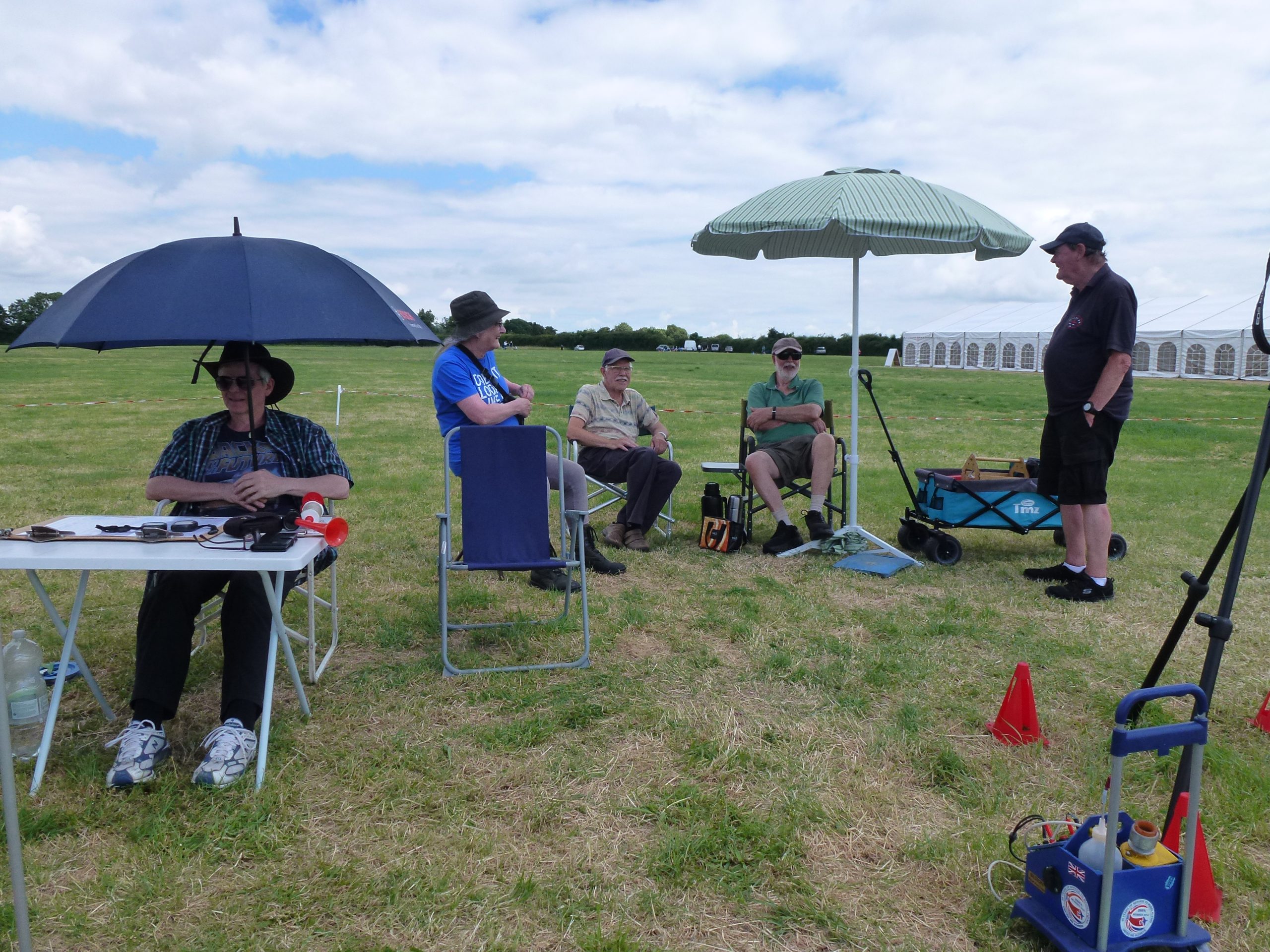
P1110678 The motley crew! It would be nice to think that the discussion being undertaken here concerned some complicated Carrier model detail, or perhaps a historical point within Naval Aviation’s developmental history. More likely, though, the menu of the Buckminster burger van was being talked about, with CD Chris Howell desperately attempting not to take part in the conversation since he’d only just finished his lunch!
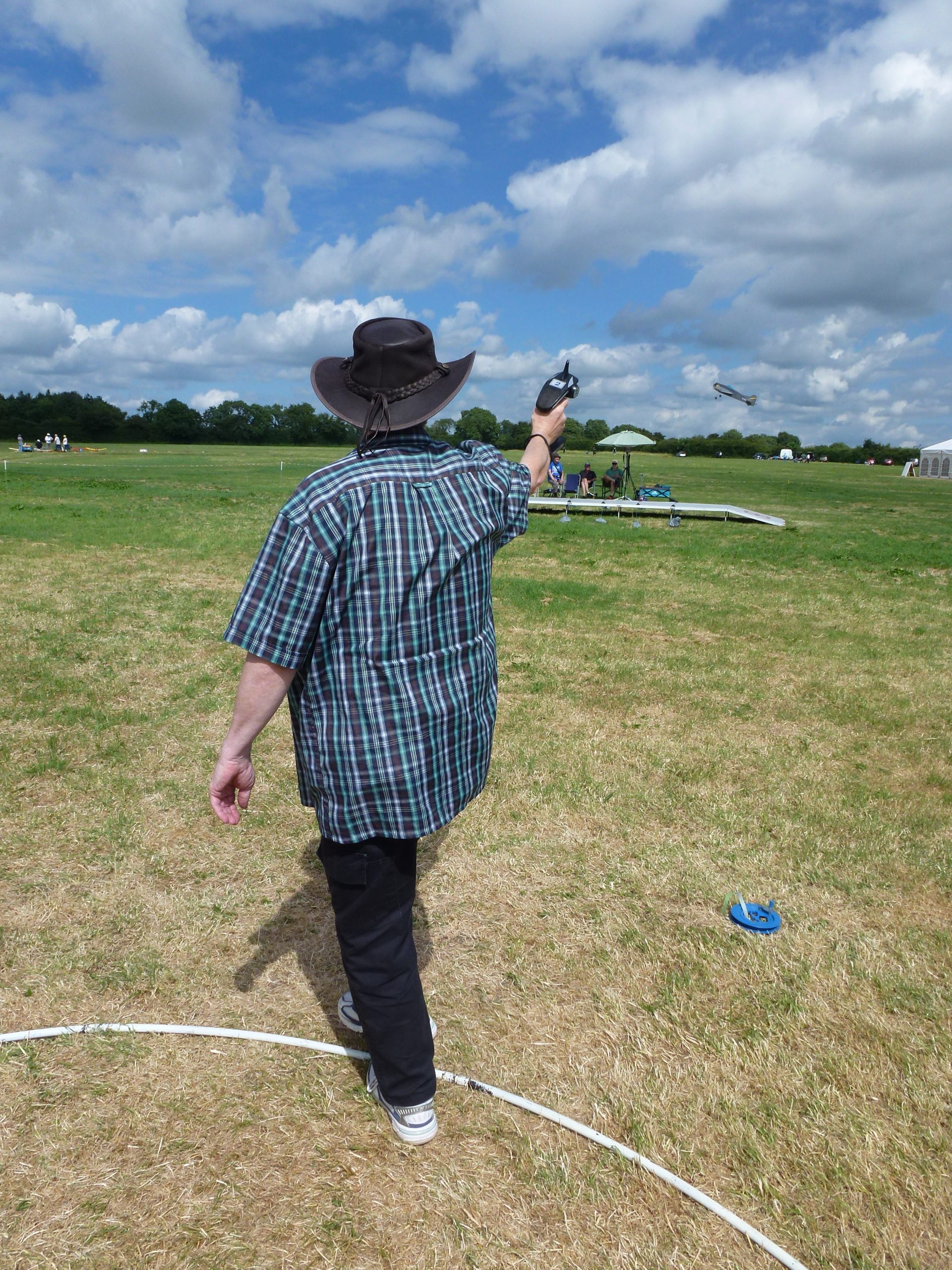
P1110685 Having written off his well-known BCD-e class Grumman TBF Avenger at his club’s field earlier on, Chris Howell returned to using an earlier model of his, the Martin AM Mauler. The Mauler, however, won the BCD contest at the 2016 Carrier National Championships, so it wasn’t going to be anything but a good performer! Nor was it – and whilst it took a couple of flights to sort out some minor problems, Chris is seen here part-way through his third and last flight’s very low speed slow run which ended with a successful hookup, 260.2 points and 1st place in BCD-e!
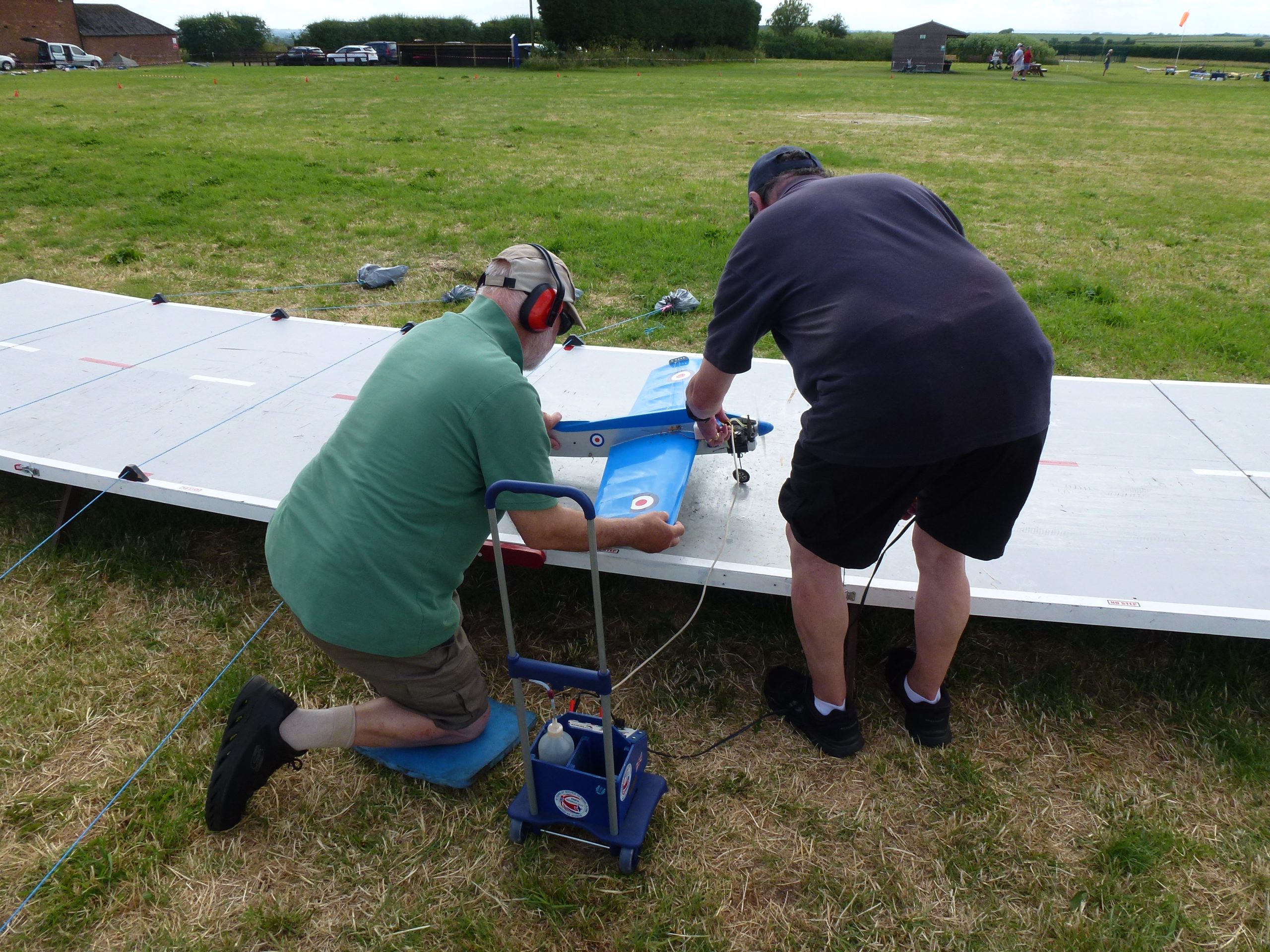
P1110696 Andrew Robertson demonstrating that aural discretion is the better part of valour as John Marsh starts up his BCD-i.c. class Fairey Gannet AEW3. Whilst John’s Gannet is certainly the fastest model in regular Carrier use at the moment, the motor run wasn’t entirely reliable and the model proved to be a bit twitchy in the wind. John’s first flight suffered an engine failure early on, and his second flight, looking set for a successful landing, just missed all four wires. Shame!

P1110709 Dave Holmes seen on the last of his four flights with his BCD-i.c. class Short Seamew. His first flight had taken a landing tumble off the inboard deck edge (note to self: don’t pull back on landing, despite what all your instincts might say!) and the next two flights suffered from an engine that stopped in mid-flight for no apparent reason. His last flight looked to be a greaser after a good landing approach, but inexplicably the Seamew’s hook failed to pick any wires at all. Whilst the Seamew came to a halt before it ran out of deck, it was an unarrested landing and therefore worth only 40 points. Now if you try to do that deliberately, perhaps with an unhooked model you’re trying to land prototypically, what d’you think will happen instead…?
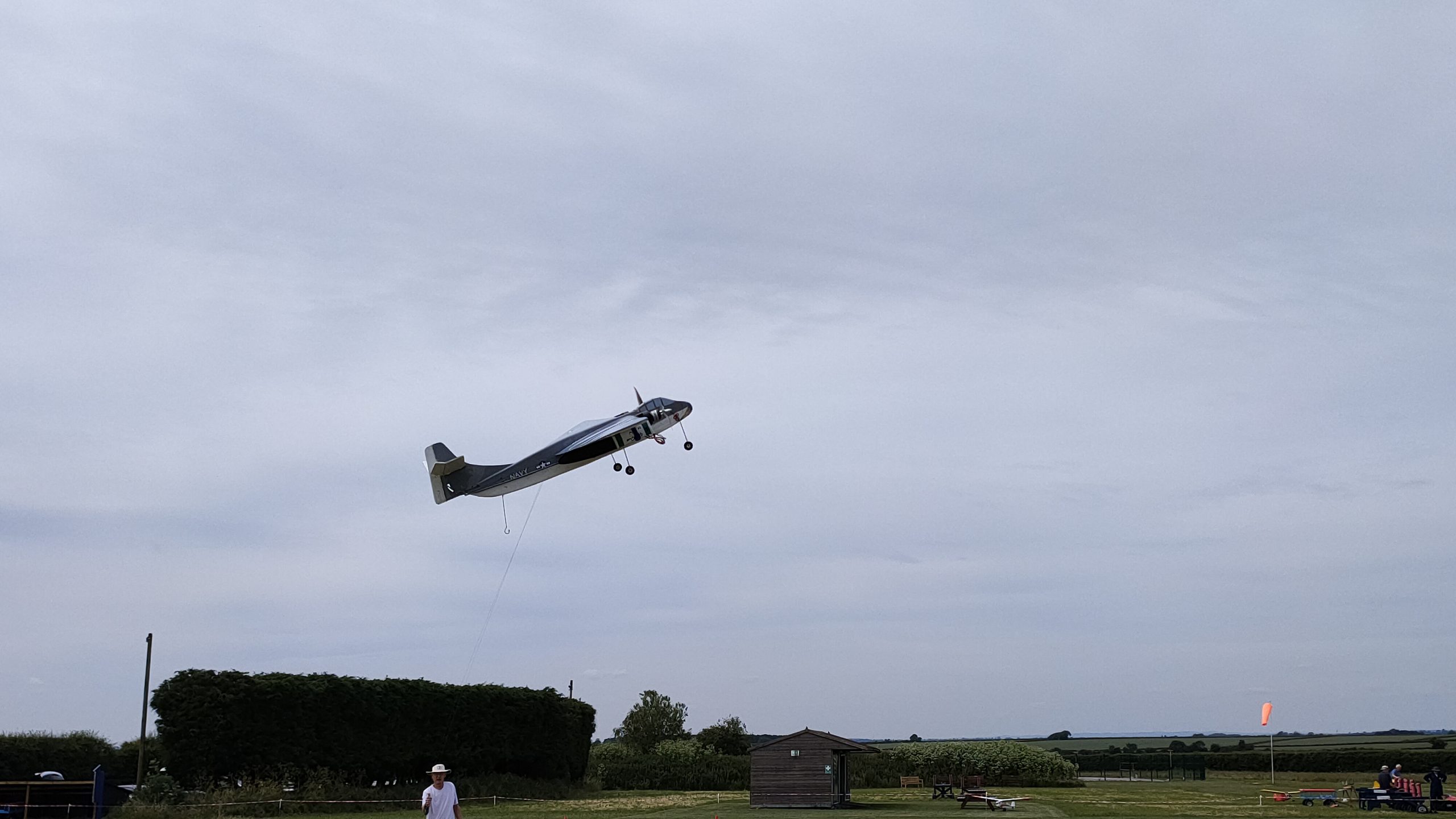
ZOE…533 Mike Welch is seen here during low speed flight with his BCD-e class North American AJ Savage twin. It was a very good flight with much of the slow run spent at the 30 degree limit as visible here, complete with continuous up elevator to hold the tail down. This was the only flight Mike made with this model and it would have easily achieved 2nd place in the electric power class but for a burst of fiendish electrickery! The Savage was on a good landing approach and Mike shut the power off at exactly the right moment over the deck – except that both engines then picked up to full throttle and the Savage sailed right over HMS Incontinent. After several laps of fruitless throttling attempts by Mike, the engines suddenly shut down and the model ditched. Oh dear! And Mike still doesn’t know why all this happened! Zoë Quilter photograph.

P1110726 And as the sun sets slowly in the west… ! In comparison with his electric AJ Savage in the previous photo, Mike Welch had a much more satisfactory time flying his piston-engined Fairey Gannet AEW3. The Gannet, being part foam, is really light and can produce a positively splendid low run time. Not only did it complete three full flights (although, surprisingly, the model failed to pick up any wires at the end of the first), Mike also increased his score on the two subsequent flights, finishing on HMS Incontinent’s No.1 wire for 216.0 points and 1st place in BCD-i.c.!
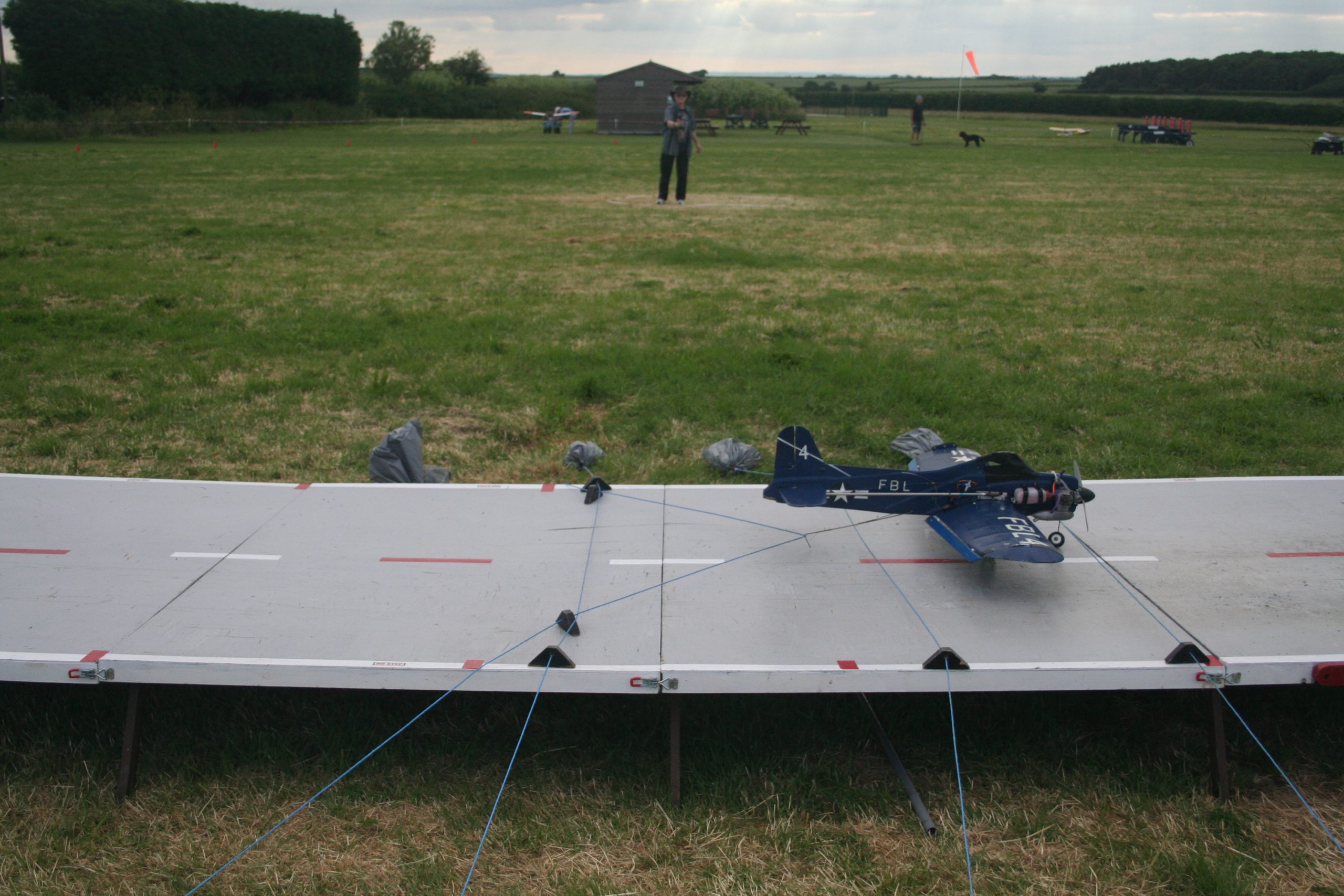
IMG_3558 It was just as well that Chris Howell’s BCD-i.c. class Ryan FR Fireball, with its black tape-festooned canopy, was attached to control lines – because if there was a pilot in the cockpit flying the model, there’s no way he could have seen where he was going! No doubt Chris would claim that the tape is merely a blind-flying training method (and as there’s a gap in the tape at the side, at least the pilot can see where he’s been…), but there’s no substitute for competence in the person who does the real piloting – and as it was Chris, the model could be expected to produce a very good score! Chris flew only once with the Fireball, just squeezing in a flight before the 1800 hours Buckminster i.c. power curfew kicked in, but his score was quite enough for 2nd place!
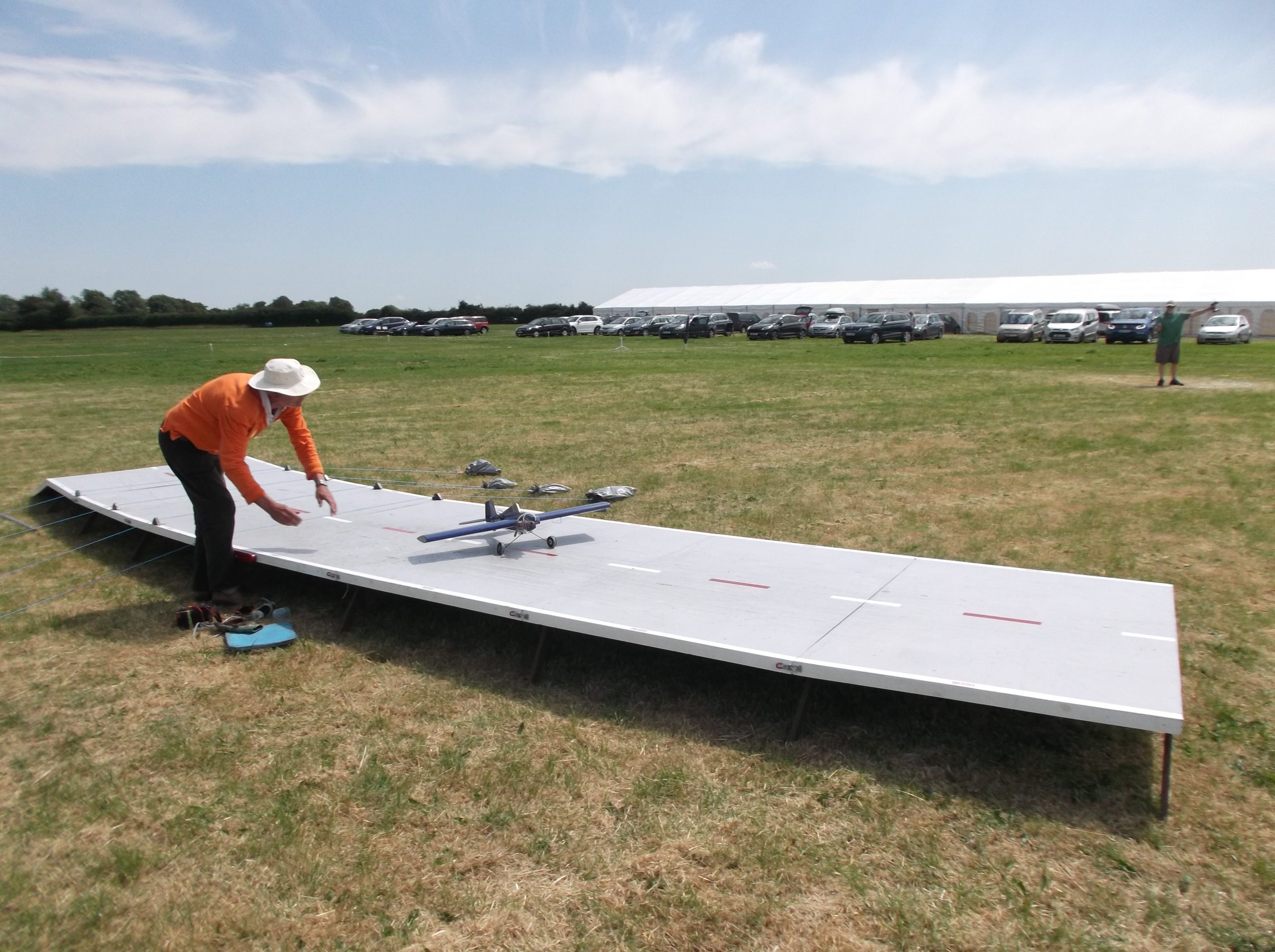
DSCF0344 Sunday was blazing sunshine all day, but so hot that no-one but Andrew Robertson chose to fly. It was also ridiculously windy, which might have been another reason for the lack of contestants! Andrew selected his BCD-i.c. class Grumman F4F Wildcat by virtue of its relatively small wing area, hoping that this model would be the least affected by the conditions. Seen here being released by Mike Welch, it may all look idyllic – but that wind was fierce! Andrew did extremely well to keep the Wildcat intact, but, even better, his top score was also the highest he’d ever achieved with the model – in fact, had his best flight not overshot once, he would have produced his best score ever, one which would have even beaten his Guardian’s best. Extraordinary!
